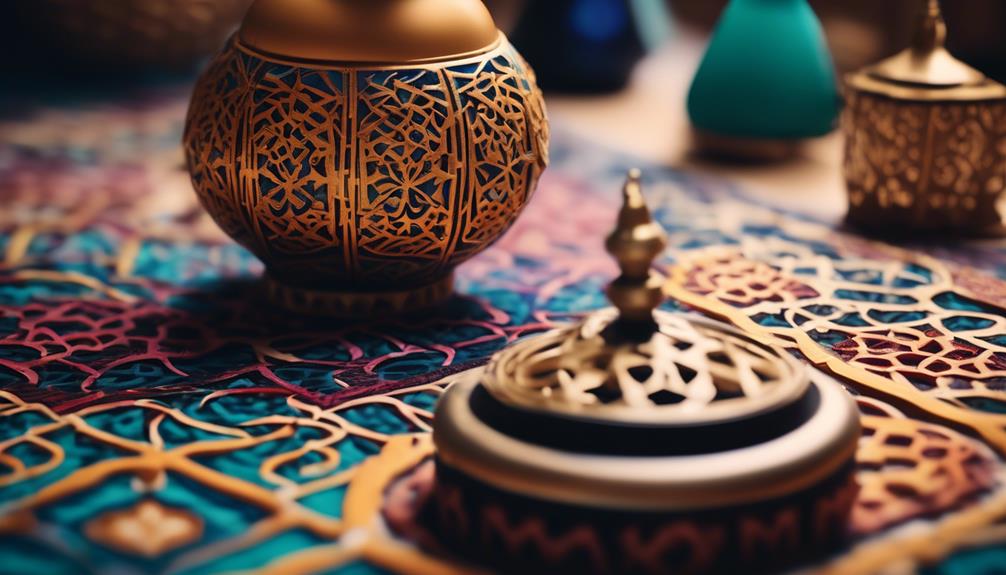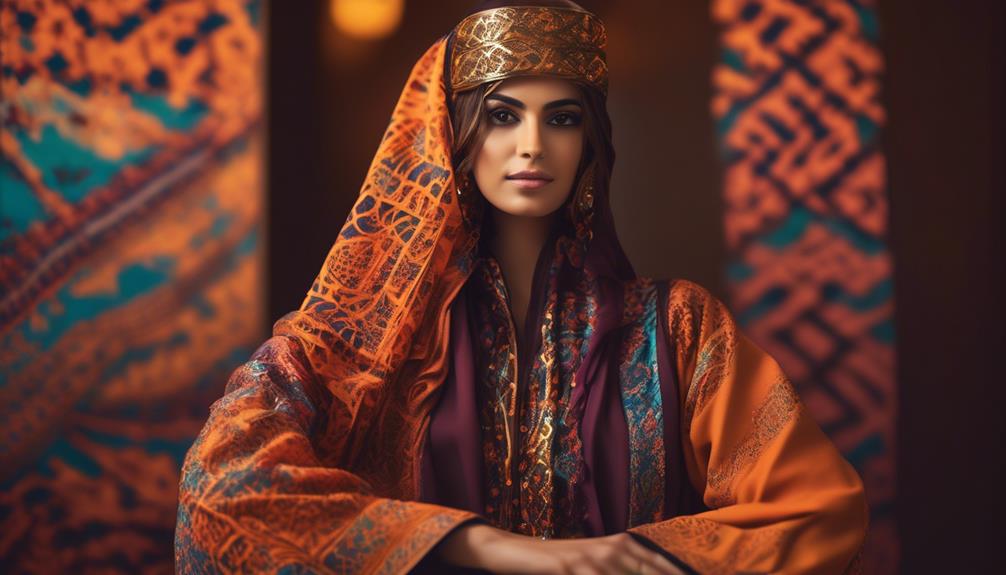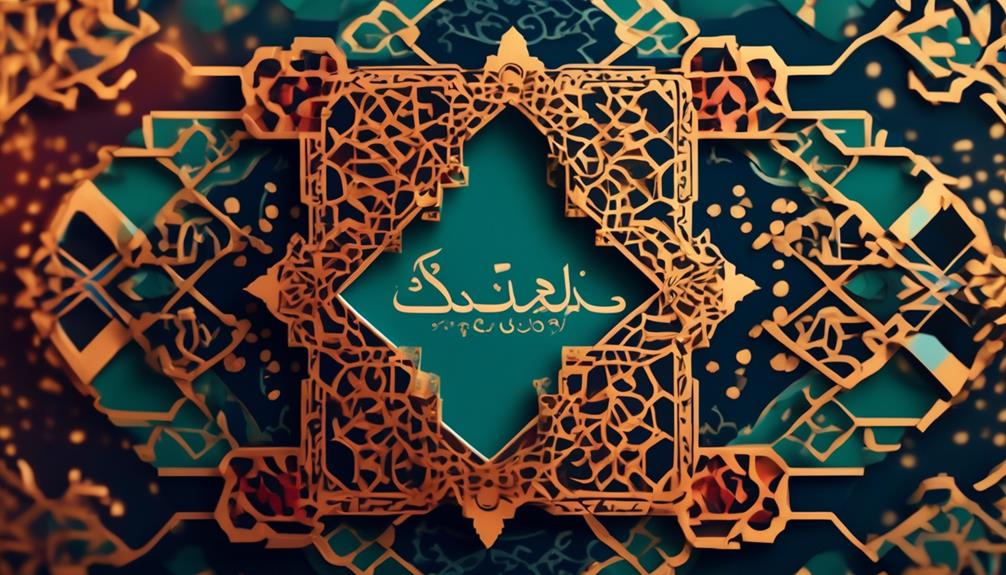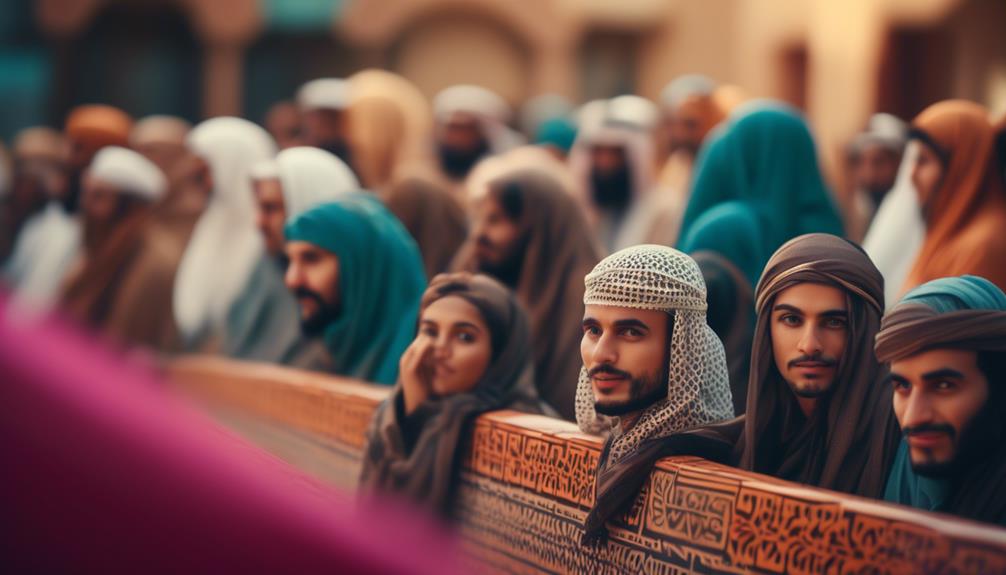Saudi Arabia, a country rich in culture and traditions, has greatly influenced the field of website design. From the intricate art of Islamic calligraphy to the vibrant colors inspired by traditional dress, Saudi traditions have left an indelible mark on the digital landscape.
In this discussion, we will explore the 10 best examples of how these traditions have shaped website design, unveiling a world where heritage meets modernity, and where the past seamlessly blends with the present.
Get ready to embark on a journey through the captivating realm of Saudi-inspired website design, where each example promises to captivate and inspire.
Islamic Art Influence

The influence of Islamic art can be seen in the design of Saudi websites, reflecting the rich cultural heritage and aesthetic principles of the Islamic tradition.
One of the most prominent aspects of Islamic art that is incorporated into the design of Saudi websites is the influence of mosque architecture. The intricate geometric patterns, arabesque motifs, and calligraphy seen in mosque architecture are often used as design elements in the layout and graphics of these websites. This not only adds a visually appealing aspect to the design but also serves as a reminder of the importance of mosques in Saudi Arabian culture.
Additionally, traditional musical instruments are also integrated into the design of Saudi websites, further showcasing the influence of Islamic art. Instruments such as the oud, qanun, and ney are often depicted in illustrations or used as icons on these websites. This integration not only pays homage to the musical heritage of Saudi Arabia but also adds a distinct cultural element to the overall design.
Arabic Calligraphy Integration
The incorporation of Arabic calligraphy into the design of Saudi websites further accentuates the influence of Islamic art and showcases the rich cultural heritage of Saudi Arabian traditions. Arabic calligraphy has a deep-rooted history in Islamic art and has long been revered for its intricate beauty and spiritual significance. In recent years, there has been a resurgence of interest in this traditional art form, with a modern twist.
Saudi websites have embraced the use of modern calligraphy to create visually stunning and contemporary aesthetics. The integration of Arabic calligraphy adds a unique and personal touch to the design, reflecting the cultural identity of Saudi Arabia. It serves as a reminder of the country's Islamic heritage and its commitment to preserving and promoting its traditions.
The use of modern calligraphy in website design allows designers to experiment with different styles and forms, while still maintaining a sense of authenticity. The fluidity and elegance of Arabic script lend themselves well to creating visually appealing and engaging designs. By incorporating Arabic calligraphy into their websites, Saudi businesses and organizations are able to stand out and create a strong visual identity that is both modern and rooted in tradition.
Traditional Dress Inspiration

Drawing from the rich cultural heritage of Saudi Arabia, traditional dress serves as a key source of inspiration in website design for Saudi businesses and organizations. The vibrant and diverse traditional clothing of Saudi Arabia reflects the country's history, customs, and values, and plays a significant role in shaping the visual aesthetics of websites.
The intricate patterns, vibrant colors, and luxurious fabrics of traditional Saudi Arabian attire are often incorporated into website layouts, graphics, and color schemes. These elements evoke a sense of authenticity and cultural pride, while also capturing the attention of visitors. Traditional dress also influences the choice of typography, with calligraphy styles resembling the elegant curves and flow of Arabic script commonly found in embroidery.
In addition to visual inspiration, traditional music and dance also have a profound impact on website design. The rhythmic beats and melodies of traditional music inform the pace and energy of website animations and transitions, creating an immersive and engaging user experience. Similarly, the graceful movements and expressive gestures of traditional dance influence the fluidity and choreography of website interactions.
Cultural Color Palettes
Cultural color palettes play a significant role in capturing the essence of Saudi traditions and infusing them into website designs. The colors chosen for a website can evoke emotions and create a visual representation of the culture it represents.
In Saudi Arabia, traditional music and cultural celebrations are vibrant and colorful, providing inspiration for the color palettes used in website design.
When designing a website that reflects Saudi tradition, it is important to consider the colors associated with traditional music. The lively beats and melodies often evoke feelings of joy and celebration, which can be represented through bold and vibrant colors. Bright shades of red, green, and yellow can be used to create a visually striking website that captures the energy and excitement of traditional music.
Cultural celebrations in Saudi Arabia are known for their rich and diverse color schemes. From the bright and elaborate costumes worn during festivals to the vibrant decorations adorning the streets, these celebrations are a visual feast. Incorporating colors such as gold, purple, and blue into website designs can help to convey the sense of grandeur and festivity associated with these cultural celebrations.
Heritage-inspired Typography

To capture the essence of Saudi traditions in website design, incorporating heritage-inspired typography is essential. Typography plays a crucial role in conveying the cultural identity of a design, and in the case of Saudi Arabia, it is deeply rooted in traditional calligraphy and cultural symbolism.
Traditional calligraphy, known as 'khatt,' holds immense significance in Saudi Arabian culture. It is a form of artistic expression that has been passed down through generations, showcasing the rich history and heritage of the region. By integrating elements of khatt into website typography, designers can evoke a sense of authenticity and cultural pride.
In addition to calligraphy, Saudi Arabian typography often incorporates cultural symbols and motifs. These symbols can range from geometric patterns to religious icons, all of which hold deep meaning in Saudi culture. By using these symbols in website typography, designers can create a visual language that resonates with Saudi audiences and reinforces their cultural identity.
Furthermore, heritage-inspired typography can also enhance the user experience by creating a sense of familiarity and connection. When visitors encounter typography that reflects their cultural heritage, it can evoke a strong emotional response and establish a sense of trust and understanding.
Patterns and Motifs From Saudi Culture
Incorporating traditional patterns and motifs from Saudi culture enhances the visual appeal and cultural authenticity of website designs. These patterns and motifs draw inspiration from various aspects of Saudi culture, such as Saudi cuisine and architecture, to create unique and visually captivating designs.
Saudi cuisine influences can be seen in the use of intricate geometric patterns and vibrant colors. Traditional Saudi dishes, such as kabsa and mutabbaq, are known for their rich and diverse flavors, and these flavors are reflected in the bold and vibrant color schemes used in website designs. The geometric patterns found in Saudi cuisine, such as the intricate designs on Arabic coffee pots, are also incorporated into website layouts and backgrounds, adding depth and visual interest.
Saudi architecture elements are another source of inspiration for website design patterns and motifs. The unique architectural styles found in Saudi Arabia, such as the intricate detailing of the Al-Masjid an-Nabawi in Medina or the distinctive patterns of the Al-Masmak Fortress in Riyadh, are translated into website designs, creating a sense of cultural identity and authenticity. These architectural elements are often used in headers, footers, and borders, adding a touch of elegance and sophistication to the overall design.
Traditional Symbolism in Website Elements

Traditional symbolism plays a significant role in the selection and placement of website elements, adding depth and meaning to the overall design. Incorporating traditional patterns and cultural symbols in website elements can create a sense of identity and cultural pride. These symbols can be used in various ways, such as in logos, icons, backgrounds, and typography.
One example of traditional symbolism in website design is the use of geometric patterns inspired by traditional Saudi art. These patterns, known as 'geometric tessellations,' are often used as decorative elements in website backgrounds or as borders for different sections. They not only add visual interest but also represent the rich heritage and craftsmanship of Saudi Arabia.
Cultural symbols such as the palm tree, camel, or traditional Arabic calligraphy can also be incorporated into website elements. These symbols can be used as icons or logos, representing the unique traditions and values of Saudi culture.
In addition to visual elements, traditional symbolism can also be reflected in the choice of colors used in the website design. For example, the colors of the Saudi flag, green and white, can be used to create a patriotic and visually appealing design.
Local Language and Script Implementation
The implementation of local language and script is crucial in creating culturally relevant and accessible website designs for Saudi audiences. Language preservation plays a significant role in maintaining the rich cultural heritage of Saudi Arabia. By incorporating the Arabic language, website designers can effectively communicate with the local population and create a sense of familiarity and comfort.
Saudi Arabia has a long history of script evolution. From ancient scripts like Nabatean and Musnad, to the modern Arabic script, the country's writing system has undergone significant changes throughout the centuries. When designing websites for Saudi audiences, it is important to consider the evolution of the script and ensure that the chosen font and typography are aligned with the cultural norms and expectations.
Website designers should also pay attention to the readability and legibility of the text. Arabic is written from right to left, which requires special attention to the layout and flow of the content. Proper spacing, font size, and contrast are essential to ensure that the text is easily readable for all users.
Emphasis on Social and Community Values

To create website designs that resonate with Saudi audiences, it is essential to prioritize the social and community values that are deeply ingrained in the culture. Saudi society places a strong emphasis on community engagement and social interaction, which directly influence the design and functionality of websites targeting Saudi users.
One important aspect of website design that reflects these values is the incorporation of community engagement features. Saudi websites often include interactive elements such as forums, comment sections, and user-generated content, which encourage users to connect and engage with each other. These features foster a sense of community and promote social interaction, aligning with the cultural values of collectivism and social cohesion.
Additionally, Saudi businesses and organizations recognize the significance of social media in connecting with their target audience. Therefore, websites designed for Saudi users often incorporate prominent social media buttons and links, facilitating easy sharing of content across various social media platforms. This social media presence not only enhances engagement but also allows websites to reach a wider audience and increase brand visibility.
Incorporating Rituals and Customs
Saudi website designers must consider the incorporation of rituals and customs in their designs to effectively engage with the cultural preferences of their target audience. One way to accomplish this is through the use of traditional music incorporation. Music has always been an integral part of Saudi culture, and incorporating traditional music into website designs can create a sense of familiarity and connection for the audience. By using traditional instruments and melodies, designers can evoke a sense of nostalgia and pride in their audience.
Another effective way to incorporate rituals and customs in website design is through storytelling. Saudi Arabia has a rich tradition of oral storytelling, and this can be translated into website design by using visual narratives and interactive elements. By telling stories through the design of the website, designers can not only convey information but also engage the audience emotionally. This can create a deeper connection between the brand and the audience, leading to increased engagement and loyalty.
Frequently Asked Questions
How Can Islamic Art Influence Website Design?
Incorporating Islamic calligraphy and geometric patterns can greatly influence website design, creating a visually appealing and culturally significant aesthetic. These elements can enhance the overall user experience and reflect the rich heritage of Islamic art.
What Are Some Examples of Traditional Dress Inspiration in Website Design?
Traditional dress symbolism and cultural symbolism in web design can be seen in the incorporation of intricate patterns, vibrant colors, and traditional motifs inspired by the traditional dress of Saudi Arabia.
How Can Cultural Color Palettes Be Incorporated Into Website Design?
Cultural color palettes can be incorporated into website design by drawing inspiration from cultural symbolism and traditional patterns. By using colors that are associated with a specific culture, websites can create a visually appealing and culturally relevant user experience.
What Are Some Examples of Heritage-Inspired Typography in Website Design?
Heritage-inspired typography is a key element in website design, showcasing cultural influences and adding depth to the overall aesthetic. When combined with carefully selected cultural color palettes, it creates a visually engaging and authentic user experience.
How Can Local Language and Script Be Implemented in Website Design?
Local language integration and script implementation in website design is essential for catering to specific cultural and linguistic needs. By incorporating elements such as localized content, translations, and appropriate fonts, websites can effectively engage and connect with their target audience.
Conclusion
In conclusion, Saudi traditions have a significant impact on website design. Influences range from Islamic art and Arabic calligraphy to traditional dress and cultural color palettes.
The incorporation of heritage-inspired typography and traditional symbolism in website elements further showcases the rich cultural heritage of Saudi Arabia.
Additionally, the use of local language and script, emphasis on social and community values, and the inclusion of rituals and customs contribute to a unique and authentic user experience.

